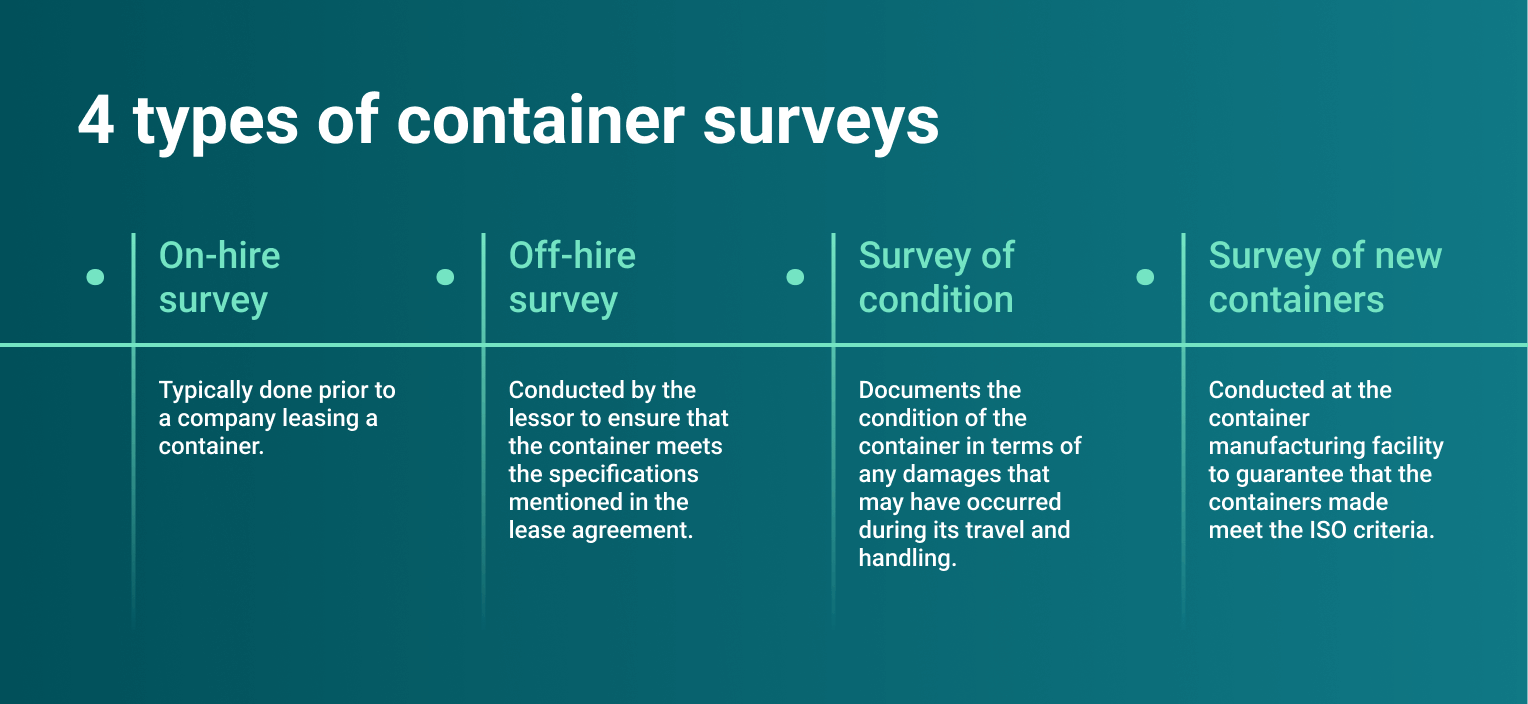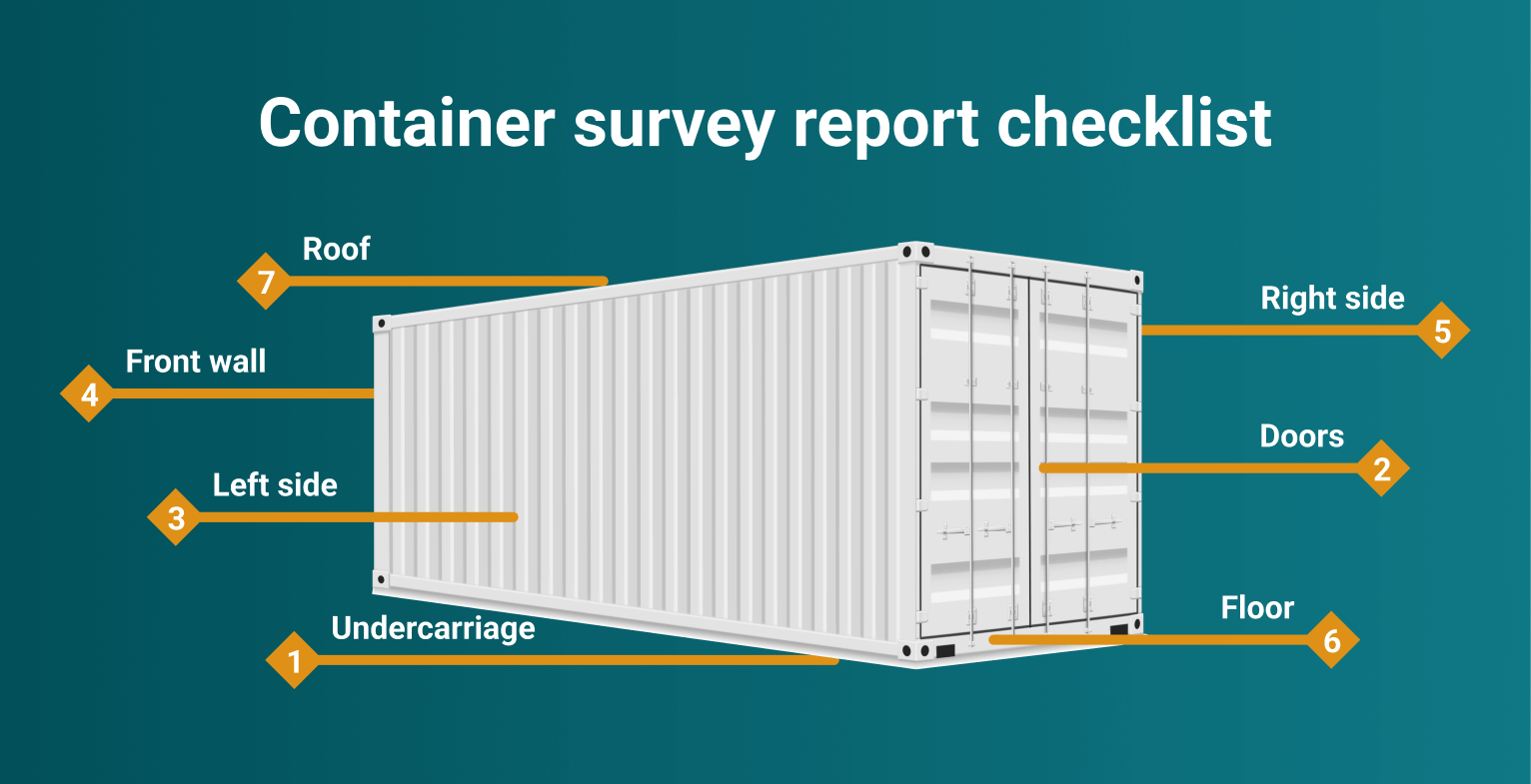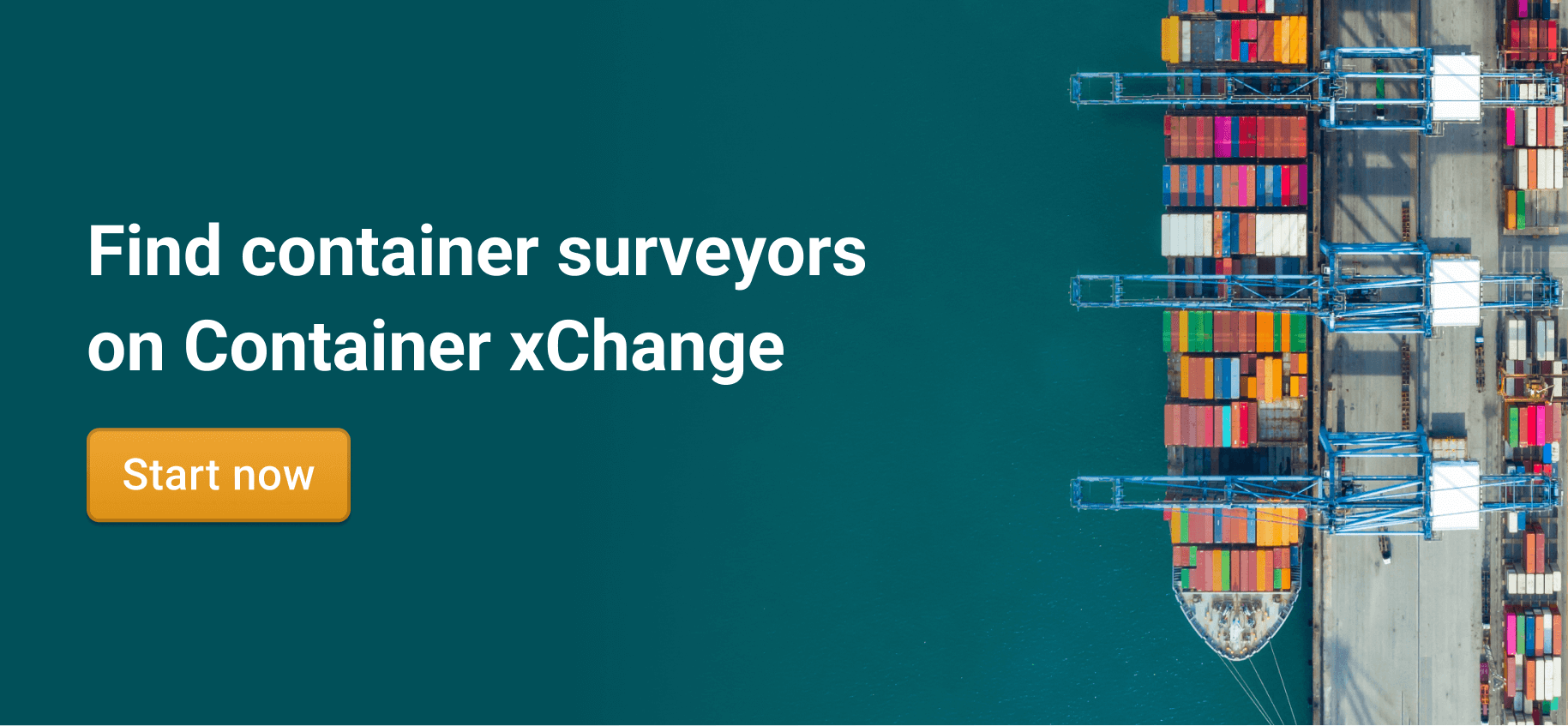Having a container survey report is necessary when leasing a box as it’s important to have your containers inspected. This blog has everything you need to know about container surveys and why it’s necessary to have a survey report.
Picture this; you’ve just got your container delivered to ship your special cargo. However, you chose not to request a container survey at the time of purchase. It doesn’t seem like a big deal until you find out that the container isn’t in the top shape as promised. Now, there’s a risk of your cargo getting damaged during transit and you’re not sure what to do.
Minor bumps and scratches may not seem like a big deal but the harsh weather conditions at sea and improper handling at depots can impact your cargo greatly. Additionally, you are also liable to pay for those bumps and scratches at the end of the journey simply because of the lack of proof that they already existed. Besides, why would you want to compromise on the quality of the box when you’ve paid thousands of dollars for it? So, how can you avoid such inconveniences? To answer this question, let’s go deeper to understand the word-of-the-day, container survey report.
What is a container survey report?
A container survey report is issued by a container surveyor after a thorough inspection of your container. This report is a verification, of sorts, that a container is appropriate for the purpose for which it’s leased. Reliable survey reports can reduce liability. Remember the cargo you needed to ship? Well, if you had a container survey report, you’d know that it’s safe for shipping that specific type of cargo and you’d also have proof that the minor damages already existed. This means that you won’t have to worry about paying for those at the end of the journey.
Why is a container survey report important?
Container inspection is not only important but it’s also required in some situations where you can’t lease or hire a container without prior inspection being done. Having a container survey report can help you avoid paying out of your pocket for damages caused prior to the container being delivered.
Say you need a reefer container; you know that reefer containers are specifically designed to carry temperature sensitive cargo of course. The container surveyor will come in and inspect the box to see whether or not the machinery works and will then classify it suitable to carry food-grade cargo. Or perhaps you’re the owner of a brand new clothing brand, and you need to transport some designer items to your next destination. You’ll need a container survey report to tell you if the container you’re hiring will be suitable to carry dry cargo or not.
Did you know that there are different types of surveys that you can opt for?
4 types of container surveys
 There are four types of container surveys that you’ll find helpful. You get an on hire survey, an off hire survey, a survey of condition and survey of old/new containers. Let’s break them down:
There are four types of container surveys that you’ll find helpful. You get an on hire survey, an off hire survey, a survey of condition and survey of old/new containers. Let’s break them down:
On hire survey
This survey is typically done before a company leases a container. It ensures that the container is in good condition and meets all of the conditions agreed upon by the lessor and lessee.
The surveyor focuses on existing damages and defects in the container. They consider these before classifying the container as fit for general cargo, food items, or any other classification required by the lessee.
This survey protects you from paying extra cash for the damages that you’re not responsible for. Here the container is inspected to determine pre existing damages or defects. On hire survey is essential to avoid any conflicts with your lessor at the time of returning the container.
Off hire survey
This survey is conducted by the lessor after the leased container is returned. This is to check for damages outside the ones mentioned in the lease agreement between the lessor and the lessee. The container surveyor identifies any repairs that would be needed on the container, and the best way to go about it.
Survey of condition
The container surveyor documents the condition of the container in terms of any damages that may have occurred during its travel and handling in this sort of survey. This type of examination also takes into account the container’s general wear and tear.
A container surveyor determines if the container is acceptable for cargo storage and transit and, if not, the most cost-effective manner of utilizing the container, such as fixing it, returning it to the lessor, or scrapping it.
Survey of old/new containers
These are the surveys conducted at the container manufacturing facility to guarantee that the new containers that are manufactured meet the ISO criteria (International Standards Organization). Prior to the start of regular mass production at a container manufacturing site, new container surveys are performed. The container surveyor would next recommend adjustments to the manufacturing process or any other abnormalities discovered during the assessment.
Similarly, you can also have an inspection done for an old container to rule out any major damages and defects the box might have before a shipment.
ISO container inspection checklist
Container inspection determines if the container’s condition is acceptable for carrying or storing cargo. The inspector or surveyor will examine the container to ensure that it complies with all of the ISO intermodal transportation terms and conditions.
Cargo and container inspection is required at all customs offices to prevent and identify the entry of illegal objects into the country. However, it is not only that segment that may profit from using bulk inspection systems.
Four-point ISO inspection checklist
There are some crucial checkpoints that safety officials look for in ISO container inspections to avoid container damage.
| ISO identification | The ISO mark should be plainly visible on the shipping container’s top right corner as well as the roof. |
| CSC plate | To be permitted for shipping under customs seal and CSC safety approval, an ISO container must pass static longitudinal restraint, focused loads, and stacking tests. |
| Shipping documentsWhat are shipping documents? In shipping, shipping documents are documents that provide information about the goods being shipped. They may include information such as the origin and destination of th... More | Officials also inspect shipping documentsWhat are shipping documents? In shipping, shipping documents are documents that provide information about the goods being shipped. They may include information such as the origin and destination of th... More to ensure that the commercial invoice, packing list, and bills of lading correspond to the actual contents inside the ISO container. |
| Cargo | Safety officers should examine goods before and after packaging, as well as cargo holds prior to and after loading. |
There are several things to consider while conducting a container inspection. Below is a 7-point checklist for container inspection to keep in mind:
7 common container inspection points
 There are some important things to check off when doing container inspection:
There are some important things to check off when doing container inspection:
|
Check that the undercarriage support beams are visible. |
|
Check for loose bolts, color differences on bonding materials, plates, and repairs, and make sure the locks are secure. |
|
Look out for hollowness by tapping on the sides with specific tools. Check for any unusual repairs on structural beams |
|
Repairs to the container’s inside walls must be visible from the outside and check for hollow sound by tapping on the sidewalls with special tools. |
|
Check to see if blocks and vents are visible, measure the length of the container using special tools, as well as listen for any hollow sounds. |
|
Make sure the height is accurate and see that the blocks/vents are visible. Ceiling repairs should be visible on the outside of the container and check for hollow sounds. |
|
Check if the floors are flat and have a uniform height from the bottom to the ceiling. |
You have come across the word ‘container surveyor’ a few times by now, so let’s understand who they are and their job a bit more.
Who is a container surveyor?
This is the person who inspects the container to see whether it serves its purpose or not. A container surveyor has many responsibilities such as:
|
Request for a container survey report on Container xChange
You’ve been around in the industry long enough to know that it’s not very easy to find reliable containers within your budget. Wasting time on countless different websites can be frustrating, and you might not be able to find exactly what you’re looking for.
Well, that’s where Container xChange comes in. With us, you can find the container you’re looking for from trusted and vetted suppliers. You can also request a container survey after you have made a deal. Our strong web of licensed container surveyors in 4,000 depots will ensure the safety and durability of your container. Each box will go through a thorough inspection to make sure you’re receiving the quality you’re paying for.
It’s simple, all you need to do is hop on to our platform, where you can find over 10k different types of containers from 2500+ locations – talk about spoilt for choice! Once you’ve decided on a box and negotiated a deal, click on ‘request a survey’ to begin the process of your container survey report.
Are you ready to receive excellent service with Container xChange? Click on the banner below and start your journey with us!
Container survey report: Common FAQs
How many types of container survey reports are there?
There are four types of container survey reports that you'll find helpful to know about. You get an on hire survey, off hire survey, survey of condition and a survey of old/new containers.
What's a container surveyor?
A container surveyor is the person who inspects the container to see whether it serves its purpose or not. They have the responsibility to thoroughly inspect a container using special tools as well as a checklist.
What's a container survey report?
A container survey report is done by a container surveyor to verify that a container is appropriate for the purpose for which it's been leased.



